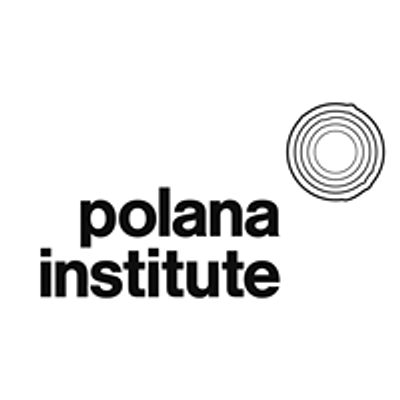Julia Platt, Wakacje
Schedule
Fri Nov 15 2024 at 06:00 pm to 09:00 pm
UTC+01:00Location
Stanisława Noakowskiego 16/35, 00-666 Warsaw, Poland | Warsaw, MZ

Advertisement
{for English scroll down}Julia Platt, Wakacje
wernisaż: 15 listopada, 18:00-21:00
ul. St. Noakowskiego 16/35, 4. klatka
wystawa otwarta do 14 grudnia
wt.-ptk: 16:00-19:00
soboty: 12:00-19:00
Najnowszy projekt Julii Platt jest w większości poświęcony siostrze bliźniczce. Dzieje się tak jakby przypadkiem. Artystka, w przeciwieństwie do wcześniejszych cykli, zwraca się wyłącznie
na zewnątrz, unika autoportretów. Stojąc blisko ściany, na balkonie lub tarasie wychodzącym na ogród, utrwala przyrodę, martwą naturę, którą widzi na pierwszym planie. Ale mamy wakacje, a
ona spędza je w domu rodzinnym z zamyśloną, spiętą, pogrążoną w pracy siostrą. I to fragment jej życia podglądamy. Jak Jack Nicholson w „Chinatown” na tropie letniego romansu, zamiast sielanki trafiamy na pożar, niedopowiedzenie lub w najlepszym wypadku, tajemnicę.
Mamy zatem „Dziwny ogród” inspirowany obrazem Józefa Mehoffera. Jednak w centrum obrazu zamiast ważki, skrzydła rozłożyła raszka, czyli w gwarze poznańskiej - suszarka na ubrania. Nawiązaniem do ważki Mehoffera wydaje się również fragment kolana malarki - jedyny znak jej obecności w całym cyklu. Jest kolorowe, młodopolskie, jak głowa owada. Obie siostry czekają w napięciu na koniec lata. I mimo tego, że jesteśmy na zewnątrz, odczuwamy rodzaj klaustrofobii, tak charakterystyczny dla twórczości artystki. Nie widzimy horyzontu, świat postaci na obrazach wydaje się celowo mały, bezpieczny, możliwy do udźwignięcia. Krajobraz nie dominuje sióstr, jest zawsze skrojony na ludzką miarę.
Na koniec lata czeka również malownicza sterta przedmiotów z obrazu „Wakacje”. Wiemy, że kompozycja rozgościła się na polskim tarasie, ale kamienne i kamionkowe przedmioty,
charakterystyczny tynk mają w sobie coś śródziemnomorskiego. To dolce far niente przedmiotów podkreśla różowe światło, być może zachodzącego słońca. Powrót sióstr do miasta zakłóci pozorną sielskość przypadkowej kompozycji.
Słońce jest ważnym bohaterem większości obrazów. Promienie słoneczne sprawiają również, że siostra Julii ciągle mruży oczy, nie spogląda na świat, lecz do środka siebie. W tym wyjściu artystki na zewnątrz czai się zatem nadal niepewność. „Burza” jest jedynie pretekstem, by zamknąć się w domu, a natura, ta martwa i ożywiona pozostają metaforą życia wewnętrznego
artystki.
{EN}
Julia Platt, Holidays
Opening: November 15th., 6 - 9 pm
Till December 14th
Address: ul. St. Noakowskiego 16/35
Tuesday - Friday: 4 - 7 pm
Saturday: 12:00- 7 pm
Julia Platt's latest project largely centers on her twin sister, yet it appears almost incidental. Unlike her earlier series, the artist avoids self-portraits, gazing outwards exclusively instead.
Standing by the wall, on balcony or terrace overlooking a garden, she captures nature and still life in the foreground. It is summertime, and she’s spending it at her family home with her introspective, tense, and preoccupied sister. This is the slice of life we witness. Like Jack Nicholson in Chinatown, tracing a summer romance, we encounter not tranquility but a fire, an understatement, or mystery at best.
Hereby we have the Strange Garden, inspired by Józef Mehoffer’s famous painting. However, in place of the dragonfly (ważka) at the center, a clothes horse – called raszka in Poznań dialect – spreads its wings. A glimpse of the artist’s knee, the sole indication of her presence throughout the series, also evokes Mehoffer's dragonfly, with its Jugendstil colorfulness, resembling an insect's head. Both sisters anxiously await the end of summer. Despite the outdoor scenery, there is a sense of claustrophobia, a recurring element in the artist’s work. The horizon is not visible, the
world made intentionally small, intimate, and manageable. The surroundings never overwhelm the sisters; being scaled down to human dimensions.
The picturesque pile of objects in the Holidays also awaits the summer’s end. Although the composition is set on a Polish terrace, there’s something Mediterranean about the stoneware, the earthenware, and the distinct plasterwork. The dolce far niente of these objects is accentuated by soft pink light, the sunset perhaps. Once the sisters return to the city, the seeming idyllic
randomness of that scene will inevitably be disturbed.
The sun plays an important role in most of the paintings. Its glare makes Julia’s sister squint all the time, diverting her eyes from the world outside to her inside. Despite this outward turn in the
artist’s work, a sense of apprehension is palpable. The Storm is just an excuse fair enough to retreat indoors, while both still and animated lives continue to serve as metaphors for the artist's inner world.
Advertisement
Where is it happening?
Stanisława Noakowskiego 16/35, 00-666 Warsaw, Poland, ulica Stanisława Noakowskiego 16, 00-668 Śródmieście, Polska,Warsaw, PolandEvent Location & Nearby Stays:

















